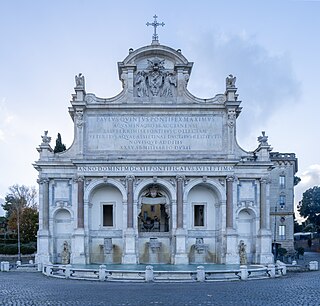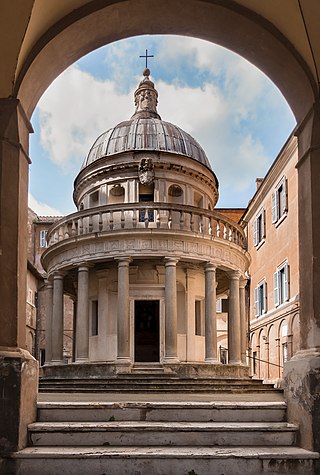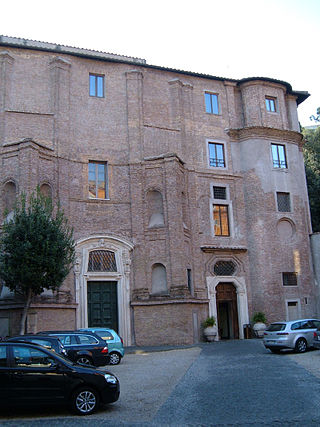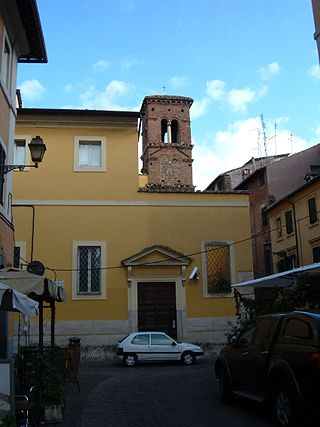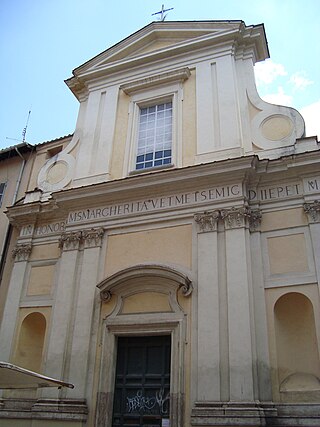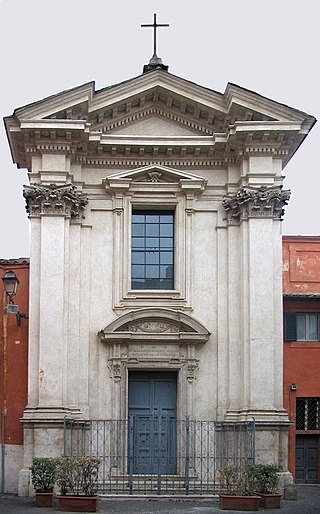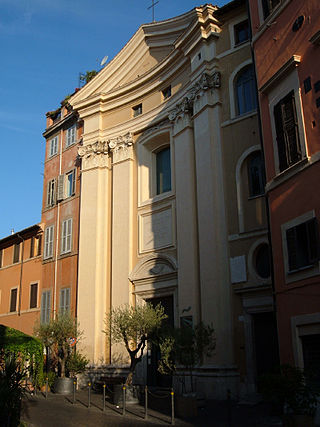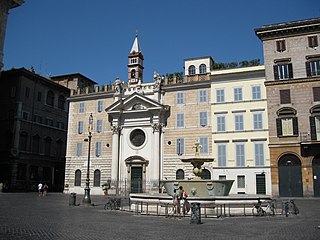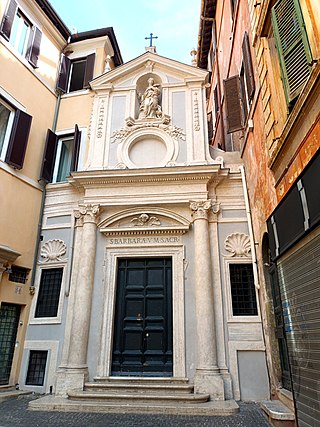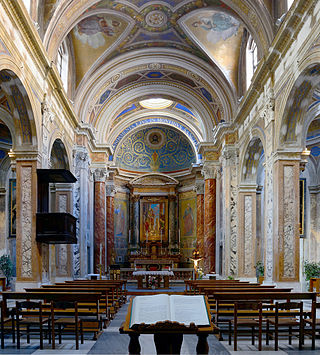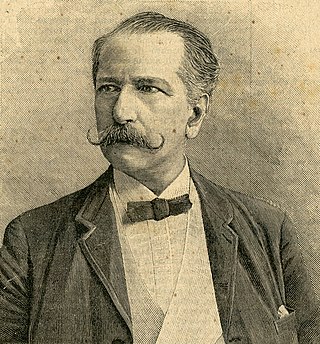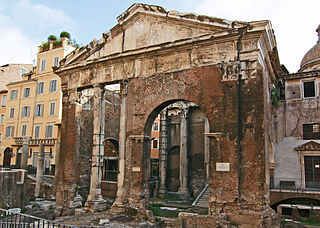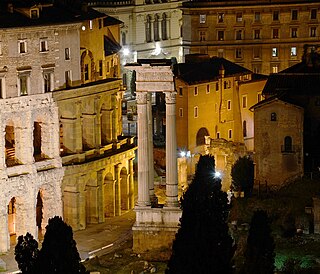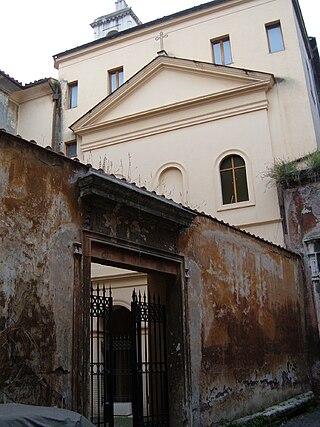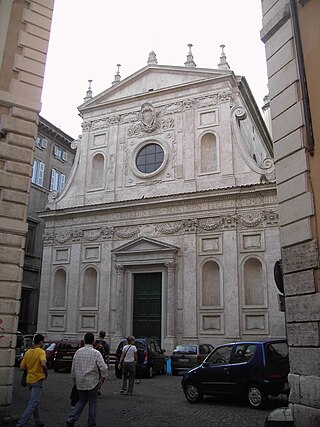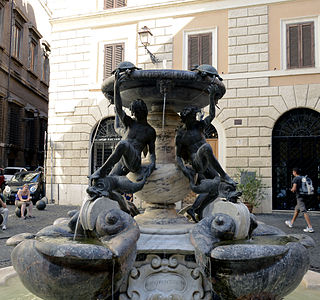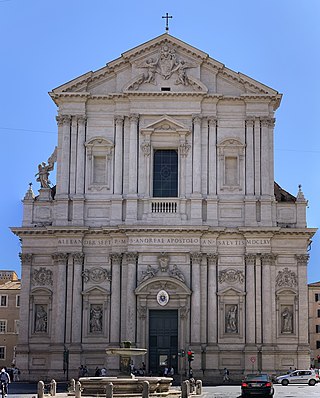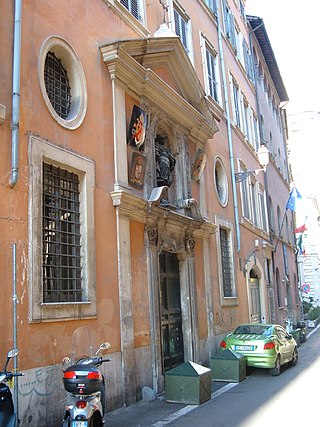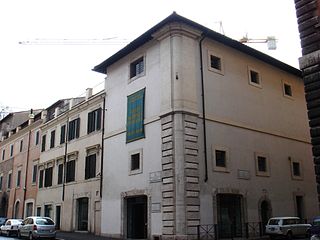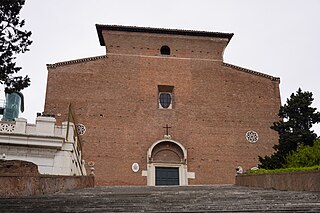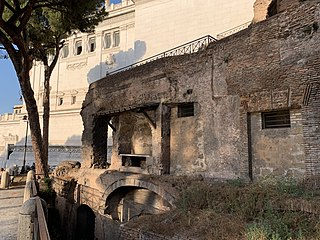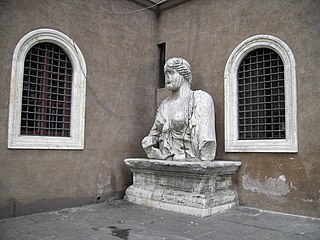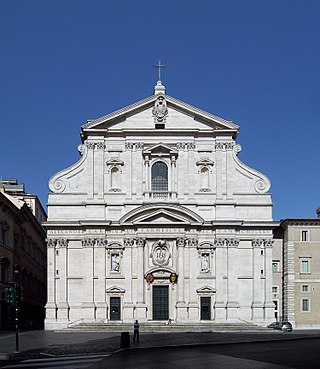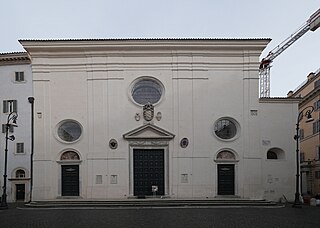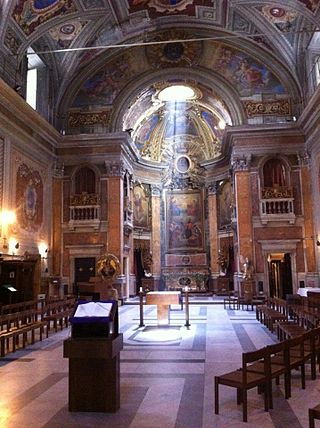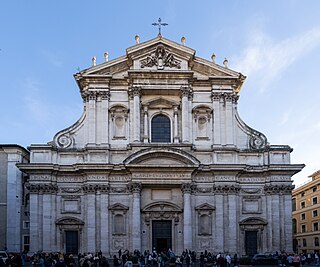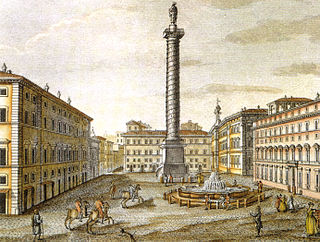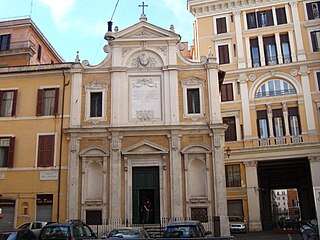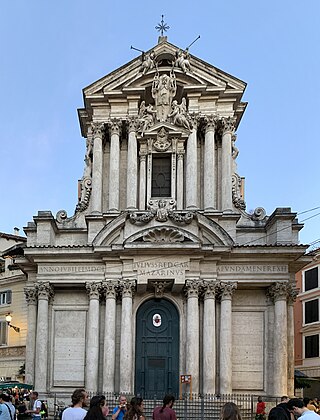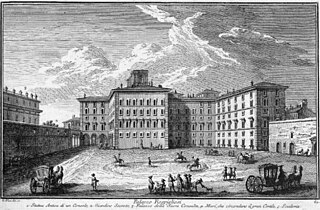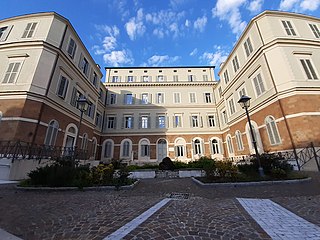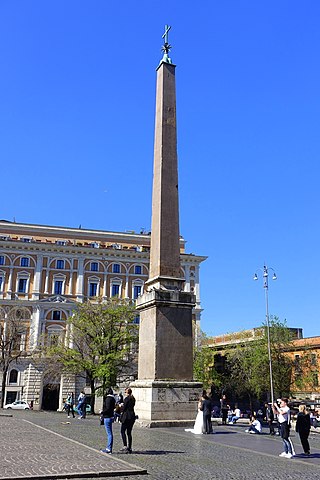Self-guided Sightseeing Tour #13 in Rome, Italy
Legend
Guided Free Walking Tours
Book free guided walking tours in Rome.
Guided Sightseeing Tours
Book guided sightseeing tours and activities in Rome.
Tour Facts
13.6 km
401 m
Experience Rome in Italy in a whole new way with our free self-guided sightseeing tour. This site not only offers you practical information and insider tips, but also a rich variety of activities and sights you shouldn't miss. Whether you love art and culture, want to explore historical sites or simply want to experience the vibrant atmosphere of a lively city - you'll find everything you need for your personal adventure here.
Activities in RomeIndividual Sights in RomeSight 1: Museo della Repubblica Romana e della memoria garibaldina
The Museum of the Roman Republic and Garibaldi's memory is part of the Museums in the municipality and is located off Porta San Pancrazio in the Trastevere district of Rome.
Wikipedia: Museo della Repubblica Romana e della memoria garibaldina (IT), Website
Sight 2: Fontana Dell'Acqua Paola
The Fontana dell'Acqua Paola, also known as Il Fontanone or Mostra dell'Acqua Paola, is a monumental fountain located on the Janiculum Hill, near the church of San Pietro in Montorio, in Rome, Italy. It was built in 1612 to mark the end of the Acqua Paola aqueduct, restored by Pope Paul V, and took its name from him. It was the first major fountain on the right bank of the River Tiber.
Sight 3: Mausoleo Ossario Garibaldino
The Garibaldi Ossuary Mausoleum is a monumental structure located on the Janiculum Hill in Rome, in the place where between April 30 and the first days of July 1849 the last defense of the Roman Republic proclaimed on February 9 of the same year was attested. There are the remains of the fallen in the battles for Rome Capital from 1849 to 1870.
Sight 4: Tempietto di S. Pietro in Montorio
The Tempietto is a small commemorative tomb (martyrium) designed by Donato Bramante, to mark the location of the crucifixion of St Peter. It was possibly built as early as 1502 in the courtyard of San Pietro in Montorio, in Rome, Italy. Commissioned by Ferdinand and Isabella of Spain, the Tempietto is considered a masterpiece of High Renaissance Italian architecture.
Sight 5: Santa Maria dei Sette Dolori
Santa Maria dei Sette Dolori is a Baroque church in Rome built attached to a convent in the rione of Trastevere, located on Via Garibaldi, near the intersection with Via dei Panieri.
Sight 6: Chiesa dei Santi Maria e Gallicano
Santi Maria e Gallicano is a Roman Catholic church in Rome, in the district of Trastevere, along via di S. Gallicano, 2.
Sight 7: Sante Rufina e Seconda
The church of Saints Rufina and Seconda is a church in Rome, in the Trastevere district, located in Via della Lungaretta, 92.
Sight 8: Santa Margherita in Trastevere
The church of Santa Margherita in Trastevere is a Roman Catholic place of worship in Rome, Italy, located in Piazza di Sant'Apollonia, 13.
Sight 9: Sant’Egidio a Trastevere
Sant'Egidio is a convent church in Trastevere, Rome. Sant'Egidio is the patron saint of hermits.
Sight 10: Santa Dorotea
Santa Dorotea is an ancient Catholic church in the Diocese of Rome served by the Conventual Franciscan friars. It was first attested to in a papal bull of Pope Callistus II in 1123, being referred to under its first dedication of San Silvestro alla Porta Settimiana.
Sight 11: Palazzo Falconieri
The Palazzo Falconieri is a palace in Rome, Italy formed in the seventeenth century as a result of remodelling by the Baroque architect Francesco Borromini. It is the home of the Hungarian Academy Rome, since its foundation in 1927. It is located between Via Giulia and Lungotevere, with entrances to both; it is near Palazzo Farnese and a few houses down and across Via Giulia from the church of Santa Caterina della Rota in the Rione of Regola. From 1814, it was occupied by cardinal Joseph Fesch, Napoleon's uncle.
Sight 12: Santa Brigida
Santa Brigida is a convent church dedicated to St Bridget of Sweden and the Swedish national church in Rome. It was also known as Santa Brigida a Campo de' Fiori since it was built on what was then part of Campo de' Fiori but is now the urbanistically distinct Piazza Farnese.
Sight 13: Chiesa di Santa Maria della Quercia
Santa Maria della Quercia is a Roman Catholic church located on the piazza of the same name, one block southeast of the Palazzo Farnese in the Rione (district) of Regola of central Rome, Italy.
Sight 14: Giordano Bruno
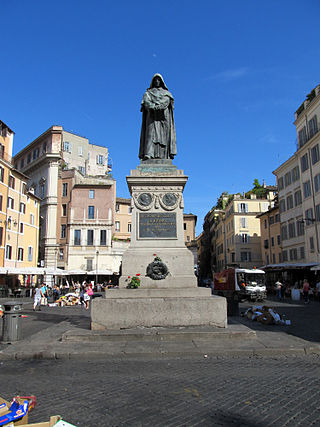
The Monument to Giordano Bruno, created by Ettore Ferrari, was erected in 1889 at Campo de' Fiori square in Rome, Italy, to commemorate the italian philosopher Giordano Bruno, who was burned there in 1600. Since its inception the idea of a monument dedicated to the executed heretic located in Rome, once the capital of the Papal States, has generated controversy between anti-clerical and those more aligned with the Roman Catholic church.
Sight 15: Santa Barbara dei Librai
Santa Barbara dei Librai is a small Roman Catholic church in Rome, Italy. It was once known as Santa Barbara alla Regola after the rione in which it was located. Today it now considered within the rione of Parione, near the Campo de' Fiori.
Sight 16: Chiesa di Santa Maria in Monticelli
Santa Maria in Monticelli is a church in the rione of Regola in Rome, sited on the street of the same name. A church was founded at the site in the 12th century and reconsecrated by Innocent II in 1143. It was known as Sancta Maria in Monticellis Arenulae de Urbe, in a bull by Urban IV in 1264. Little remains of the medieval church, except for the bell-tower. The church was entirely reconstructed in 1716 by Matteo Sassi, on a commission by Clement XI, and in 1860 by Francesco Azzurri. The church is the home to the Curia Generalizia dei Padri Dottrinari.
Sight 17: Federico Seismit Doda
Federico Seismit-Doda (1825–1893) was a Dalmatian Italian politician who gained prominence during the Revolutions of 1848 in the Italian states.
Sight 18: Santa Maria del Pianto ai Catinari
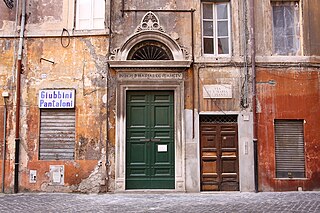
Santa Maria del Pianto is a Roman Catholic church in the Rione Regola, with entrances on the South at Piazza delle Cinque Scole/ Via di Santa Maria de' Calderari and on the north on Via di Santa Maria del Pianto. It is presently affiliated with Oblates of the Virgin Mary.
Sight 19: Portico d'Ottavia
The Porticus Octaviae is an ancient structure in Rome. The colonnaded walks of the portico enclosed the Temples of Juno Regina (north) and Jupiter Stator (south), as well as a library. The structure was used as a fish market from the medieval period up to the end of the 19th century.
Sight 20: Temple of Apollo Sosianus
The Temple of Apollo Sosianus is a Roman temple dedicated to Apollo in the Campus Martius, next to the Theatre of Marcellus and the Porticus Octaviae, in Rome, Italy. Its present name derives from that of its final rebuilder, Gaius Sosius.
Sight 21: Sant’Ambrogio della Massima
Sant'Ambrogio della Massima is an ancient Catholic church in rione Sant'Angelo, Rome, Italy. It is home to the General Curia of the Subiaco Cassinese Congregation of the Order of Saint Benedict.
Sight 22: Santa Caterina dei Funari
Santa Caterina dei Funari is a church in Rome in Italy, in the rione of Sant'Angelo. The church is mainly known for its façade and its interior with frescoes and paintings.
Sight 23: Palazzo Mattei di Giove
The Palazzo Mattei di Giove is the most prominent among a group of Mattei houses that forms the insula Mattei in Rome, Italy, a block of buildings of many epochs.
Sight 24: Turtle Fountain
The Fontana delle Tartarughe is a fountain of the late Italian Renaissance, located in Piazza Mattei, in the Sant'Angelo district of Rome, Italy. It was built between 1580 and 1588 by the architect Giacomo della Porta and the sculptor Taddeo Landini. The bronze turtles around the upper basin, usually attributed either to Gian Lorenzo Bernini or Andrea Sacchi, were added in either 1658 or 1659 when the fountain was restored.
Sight 25: Basilica di Sant'Andrea della Valle
Sant'Andrea della Valle is a titular church and minor basilica in the rione of Sant'Eustachio of the city of Rome, Italy. The basilica is the seat of the general curia of the Theatines and is located on the Piazza Vidoni, at the intersection of Corso Vittorio Emanuele and Corso Rinascimento. It is one of the great 17th century preaching churches built by Counter-Reformation orders in the Centro Storico.
Sight 26: San Giuliano dei Fiamminghi
The Church of St. Julian of the Flemings is a Roman Catholic church dedicated to Saint Julian the Hospitaller, located in Rome, Italy. Historically, the church has been the National Church in Rome of the Southern Netherlands and, in 1830, became the national church of the Kingdom of Belgium.
Sight 27: Area sacra dell'Argentina
Largo di Torre Argentina is a large open space in Rome, Italy, with four Roman Republican temples and the remains of Pompey's Theatre. It is in the ancient Campus Martius.
Sight 28: Crypta Balbi
The Crypta Balbi is a complex connected to the ancient theater of Balbo in Rome. Today it is one of the headquarters of the National Roman Museum.
Sight 29: Palazzo dei Conservatori
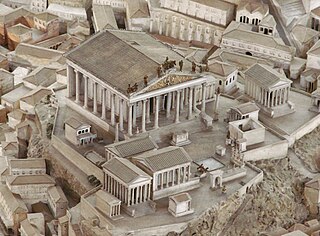
The Capitolium or Capitoline Hill, between the Forum and the Campus Martius, is one of the Seven Hills of Rome.
Sight 30: Santa Maria in Aracoeli
The Basilica of Saint Mary of the Altar in Heaven is a titular basilica and conventual church of the Franciscan Convent of Aracoeli located the highest summit of the Capitoline Hill in Rome, Italy. From 1250-1798 it was the headquarters of the General Curia of the Order of Friars Minor as well as being once of the cities principal civic churches. It is still the designated church of the city council of Rome, which uses the ancient title of Senatus Populusque Romanus. The present cardinal priest of the Titulus Sanctae Mariae de Aracoeli is Salvatore De Giorgi.
Sight 31: Museo Internazionale del Presepio
The International Typological Museum of the Nativity Scene "Angelo Stefanucci" is a private museum of the city of Rome located in the basement of the church of Saints Quirico and Giulitta, open to the public with restricted hours, which collects dozens of nativity scenes from all over the world, built with different materials and techniques, as well as books, medals, posters, stamps always related to the nativity scenes.
Wikipedia: Museo tipologico internazionale del presepio Angelo Stefanucci (IT), Website
Sight 32: Santa Maria di Loreto
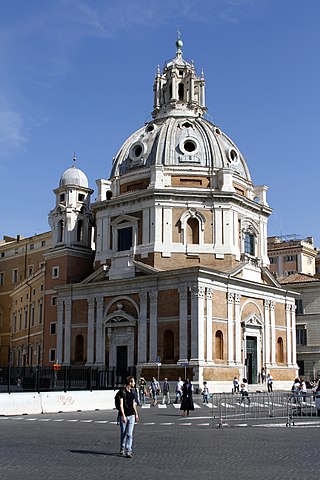
Santa Maria di Loreto is a 16th-century church in Rome, central Italy, located just across the street from the Trajan's Column, near the giant Monument of Vittorio Emanuele II.
Sight 33: Insula dell'Ara Coeli
The Insula dell'Ara Coeli is one of the few surviving examples of an insula, the kind of apartment blocks where many Roman city dwellers resided. It was built during the 2nd century AD, and rediscovered, under an old church, when Benito Mussolini initiated a plan for massive urban renewal of Rome's historic Capitoline Hill neighbourhood.
Sight 34: talking statue Madama Lucrezia
Madama Lucrezia is one of the six "talking statues" of Rome. Pasquinades — irreverent satires poking fun at public figures — were posted beside each of the statues from the 16th century onwards, written as if spoken by the statue, largely in answer to the verses posted at the sculpture called "Pasquino" Madama Lucrezia was the only female "talking statue", and was the subject of competing verses by Pasquino and Marforio.
Sight 35: Chiesa del Gesù
The Church of the Gesù is the mother church of the Society of Jesus (Jesuits), a Catholic religious order. Officially named Chiesa del Santissimo Nome di Gesù, its façade is "the first truly baroque façade", introducing the baroque style into architecture. The church served as a model for innumerable Jesuit churches all over the world, especially in Central Europe and in Portuguese colonies. Its paintings in the nave, crossing, and side chapels became models for art in Jesuit churches throughout Italy and Europe, as well as those of other orders. The Church of the Gesù is located at the Piazza del Gesù in Rome, and is one of the great 17th century preaching churches built by Counter-Reformation orders like the Jesuits in the Centro Storico.
Sight 36: Chiesa di Santo Stefano del Cacco
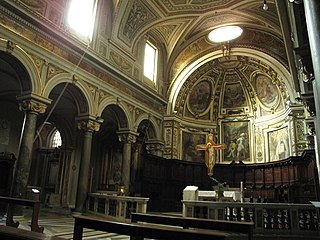
Santo Stefano de Pinea or more commonly Santo Stefano del Cacco is a church in Rome dedicated to Saint Stephen, located at Via di Santo Stefano del Cacco 26.
Sight 37: Basilica di Santa Maria sopra Minerva
Santa Maria sopra Minerva is one of the major churches of the Order of Preachers in Rome, Italy. The church's name derives from the fact that the first Christian church structure on the site was built directly over the ruins or foundations of a temple dedicated to the Egyptian goddess Isis, which had been erroneously ascribed to the Greco-Roman goddess Minerva.
Sight 38: Santa Maria in Via Lata
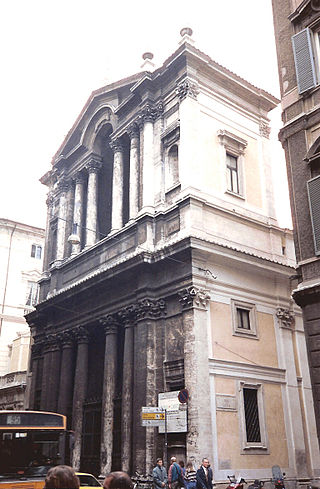
Santa Maria in Via Lata is a church on the Via del Corso, in Rome, Italy. It stands diagonal from the church of San Marcello al Corso. It is the stational church for Tuesday in the fifth week of lent.
Sight 39: Oratorio di San Francesco Saverio
The Oratory of San Francesco Saverio del Caravita is a 17th-century baroque oratory in Rome, near the Church of Sant’Ignazio in rione Pigna. It is home to the Caravita Community, an international English-language Catholic community in Rome.
Wikipedia: Oratory of San Francesco Saverio del Caravita (EN)
Sight 40: St Ignatius
The Church of St. Ignatius of Loyola at Campus Martius is a Latin Catholic titular church, of deaconry rank, dedicated to Ignatius of Loyola, the founder of the Society of Jesus, located in Rome, Italy. Built in Baroque style between 1626 and 1650, the church functioned originally as the chapel of the adjacent Roman College, which moved in 1584 to a new larger building and was renamed the Pontifical Gregorian University. It is one of the great 17th century preaching churches built by Counter-Reformation orders in the Centro Storico.
Sight 41: Fontana di piazza colonna
The fountain in the Piazza Colonna is a fountain in Rome, Italy, designed by the architect Giacomo Della Porta and constructed by the Fiesole sculptor Rocco Rossi between 1575 and 1577.
Sight 42: Oratorio del Crocifisso
The Oratorio del Santissimo Crocifisso or the Oratory of the Most Holy Crucifix is a building in central Rome, Italy. Connected to the nearby church of San Marcello al Corso, it houses the Crucifix of San Marcello and served as a chapel and meeting place for the Archconfraternity of the Most Holy Crucifix devoted to the image. It is best known, like the Oratorio del Gonfalone, which shares the same artists, for its Mannerist decorations.
Sight 43: Santi Vincenzo e Anastasio a Fontana di Trevi
Santi Vincenzo e Anastasio a Trevi is a Baroque church in Rome, the capital of Italy. Built from 1646 to 1650 to the design of architect Martino Longhi the Younger and located in close proximity to the Trevi Fountain and the Quirinal Palace, for which it served as parish church, it is notable as the place where the precordia and embalmed hearts of 22 popes are preserved.
Sight 44: Santa Croce e San Bonaventura dei Lucchesi
Santa Croce e San Bonaventura alla Pilotta or Santa Croce e di San Bonaventura dei Lucchesi is a church in Rome, sited on via dei Lucchesi in the Trevi district, between the Trevi Fountain and the Pontificia Università Gregoriana. It is Lucca's regional church in Rome.
Sight 45: Palazzo Rospigliosi-Pallavicini
The Palazzo Pallavicini-Rospigliosi is a palace in Rome, Italy. It was built by the Borghese family on the Quirinal Hill; its footprint occupies the site where the ruins of the baths of Constantine stood, whose remains still are part of the basement of the main building, the Casino dell'Aurora. Its first inhabitant was the famed art collector Cardinal Scipione Borghese, the nephew of Pope Paul V, who wanted to be housed near the large papal Palazzo Quirinale. The palace and garden of the Pallavicini-Rospigliosi were the product of the accumulated sites and were designed by Giovanni Vasanzio and Carlo Maderno in 1611–16. Scipione owned this site for less than a decade, 1610–16, and commissioned the construction and decoration of the casino and pergolata, facing the garden of Montecavallo. The Roman palace of this name should not be mistaken for the panoramic Villa Pallavicino on the shores of Lake Como in Lombardy. The Palace has also been the scene of important cultural and religious events. On June 6, 1977 Princess Elvina Pallavicini invited in Palazzo Pallavicini Rospigliosi the archbishop monsignor Marcel Lefebvre for a conference on the Second Vatican Council and for the celebration of a Traditiona Mass, under the careful direction of the marquis Roberto Malvezzi, and Frigate Captain marquis Luigi Coda Nunziante di San Ferdinando. Many members of Alleanza Cattolica, the baron Roberto de Mattei, the pharmacologist Giulio Soldani, the sociologist Massimo Introvigne, the psychiatrist Mario Di Fiorino and Attilio Tamburrini and his brother Renato Tamburrini took part to the event.
Sight 46: Teatro Eliseo
The Teatro Eliseo is a theatre located in Rome, Italy.
Sight 47: Chiesa dei Santi Vitale e Compagni Martiri in Fovea
The early Christian imperial basilica of the Saints Martyrs Vitale, Valeria, Gervasio and Protasio known more commonly as the basilica of San Vitale and Compagni Martiri in Fovea or more simply as San Vitale al Quirinale. It is the oldest Catholic place of worship in the historic center of Rome, located in via Nazionale. The imperial basilica of San Vitale al Quirinale, built under the pontificate of Pope Siricius after 386 and consecrated and richly decorated by Pope Innocent in 402 is the first public Christian basilica with a baptistery not founded on pre-existing pagan temples, mentioned in the Liber pontificalis, built by the Emperor Theodosius at the behest of Saint Ambrose of Milan, in honor of the miraculous discovery of the bodies of martyrs Gervasius and Protasius in Milan. It is the most frescoed basilica in Rome.
Sight 48: Museo storico della fisica Enrico Fermi
The "Enrico Fermi" Historical Museum of Physics and Study and Research Center is a research institution supervised by the Ministry of University and Research that collects the scientific legacy of the Royal Institute of Physics of the University of Rome. It is located in the historic building at number 89 of Via Panisperna in Rome, where in 1934 Enrico Fermi and his students made the important discovery of the role of slow neutrons in nuclear fission.
Wikipedia: Museo storico della fisica e Centro di studi e ricerche "Enrico Fermi" (IT), Website
Sight 49: Obelisco Esquilino
The Esquiline Obelisk is one of the thirteen ancient obelisks in Rome, located in Piazza dell'Esquilino, behind the apse of the Basilica of Santa Maria Maggiore, the center of the Esquilino district from which it takes its name.
Sight 50: Servian Wall
The Servian Wall is an ancient Roman defensive barrier constructed around the city of Rome in the early 4th century BC. The wall was built of volcanic tuff and was up to 10 m (33 ft) in height in places, 3.6 m (12 ft) wide at its base, 11 km (6.8 mi) long, and is believed to have had 16 main gates, of which only one or two have survived, and enclosed a total area of 246 hectares. In the 3rd century AD it was superseded by the construction of the larger Aurelian Walls as the city of Rome grew beyond the boundary of the Servian Wall.
Share
How likely are you to recommend us?
Disclaimer Please be aware of your surroundings and do not enter private property. We are not liable for any damages that occur during the tours.
GPX-Download For navigation apps and GPS devices you can download the tour as a GPX file.

